Printed document of various sizes, 19″ x 16″ was often used. Common format included an engraved scene with four sailing vessels near shore, centered at the top of the certificate, “United States” was engraved vertically along the right margin. The signatures of the collector or deputy collector, and the port surveyors are usually present, as are various customs or consular seals.
The basic format for a Certificate of Registry was established by an Act of 31 December 1792, which prescribed numerous regulations for American shipping. The document was issued throughout the customs districts, to any American owned and built vessel over 20 tons, employed in foreign trade. It contained the vessel name, as well as the names of the owners and master. A physical description of the vessel was also included, along with the name of the place where she was built. A new Registration and a REgister Bond was required whenever the vessel was physically altered (re-rigged, new deck house, etc.), or when her ownership changed. Permanent Registrations could only be secured at the vessel’s official hailing port, although temporary certificates were issued when needed, by other customs districts. Registers, and Enrolment Certificates, were made out in triplicate. One copy was given to the master for use aboard the vessel. A second copy was kept by the collector at the customhouse, while the third was sent to the treasury Department. A number, usually found near the top of the document, complied with the 1792 Act, which required that each permanent and temporary certificate issued be numbered progressively, beginning anew each year. Ship’s Registers were considered evidence of “national character,” and most American vessels that qualified carried one. The document might be considered as serving the same general purpose as your automobile registration. They are fairly common maritime documents, although the fact that they were to be surrendered when no longer valid limits their numbers somewhat in private collections. They can provide valuable information for anyone involved in the study of a vessel’s history and management.
Before the Act of 1792, each state was responsible for registering and certifying vessels. This Certificate, issued by Massachusetts in accordance with state regulations passed by the Commonwealth in 1781, displays the state’s seal and is signed by Governor John Hancock, 29 April 1784.
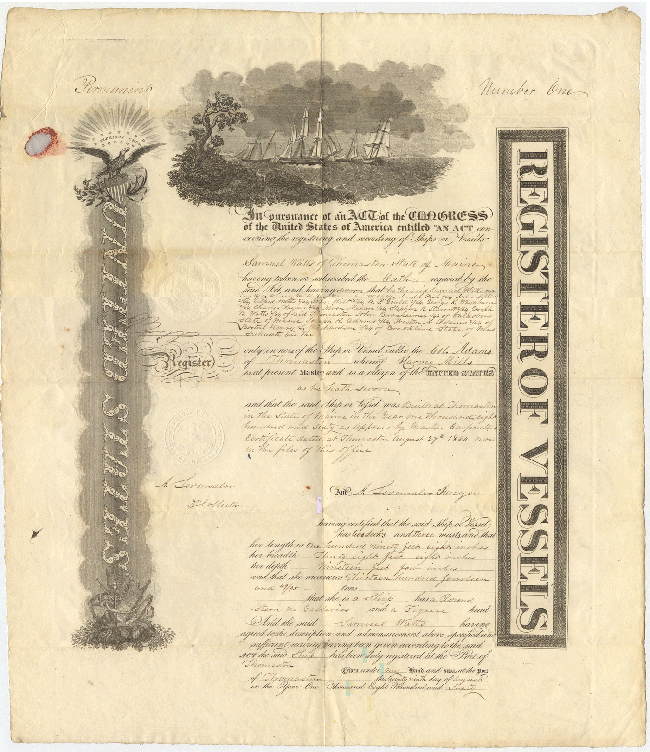
Permanent Register number one, issued at the port of Thomaston, Maine 29 August 1860. This was the first such document issued by that port during the year, and it was also the initial Register for the ship Col. Adams, whose construction had just been completed. Certificate displays customs seal and the signature of the collector.
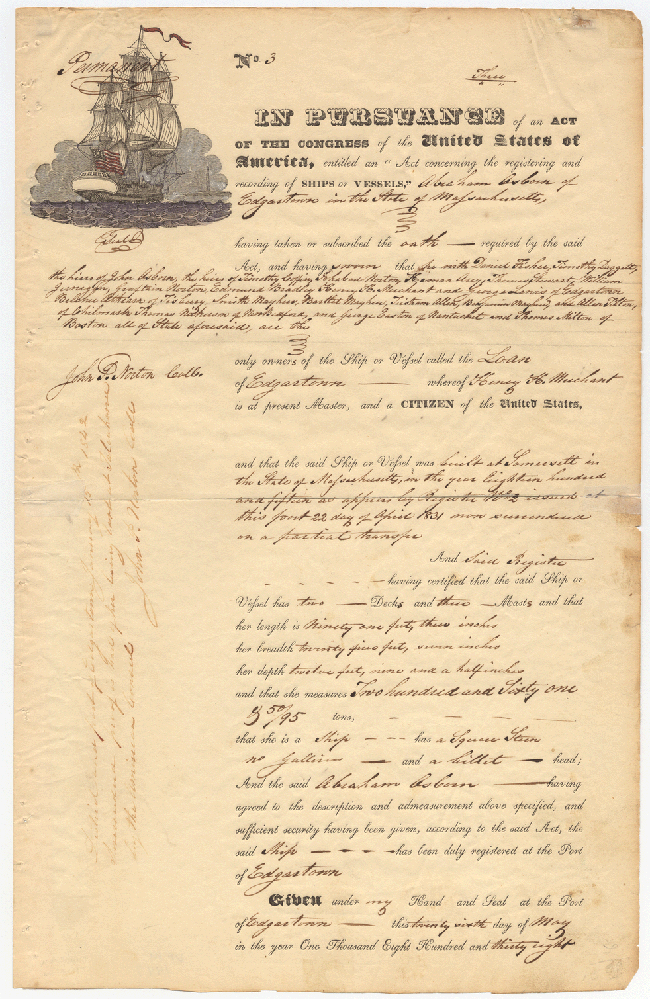
This is a record copy of a vessel’s Registry Certificate, a document that was to be retained by the collector who issued the original. It is noticeably less ornate, but contains the same information. The margin notation on this copy, written by the collector, indicates that this ship was lost, and the original Registry Certificate surrendered at Talcahuano, Chile, in 1842, four years after the document was issued.
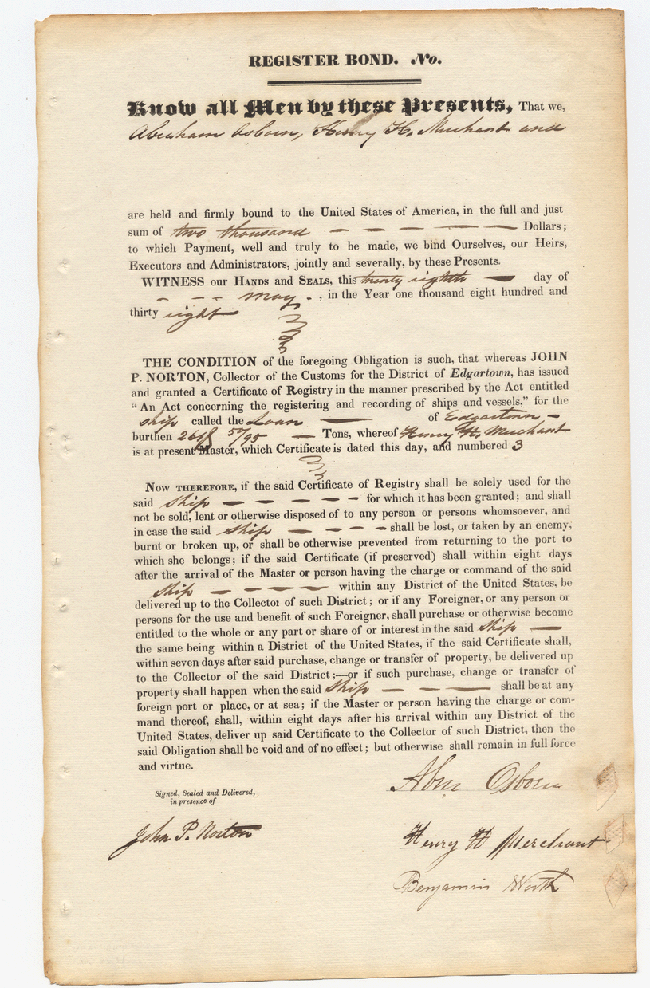
This Register Bond was executed on the same day the Registry Certificate described previously was issued. The required document bonded the owners of the ship Loan to the U.S. government for a sum of two thousand dollars, as insurance for their compliance with conditions of the 1792 Act for registering and recording vessels.
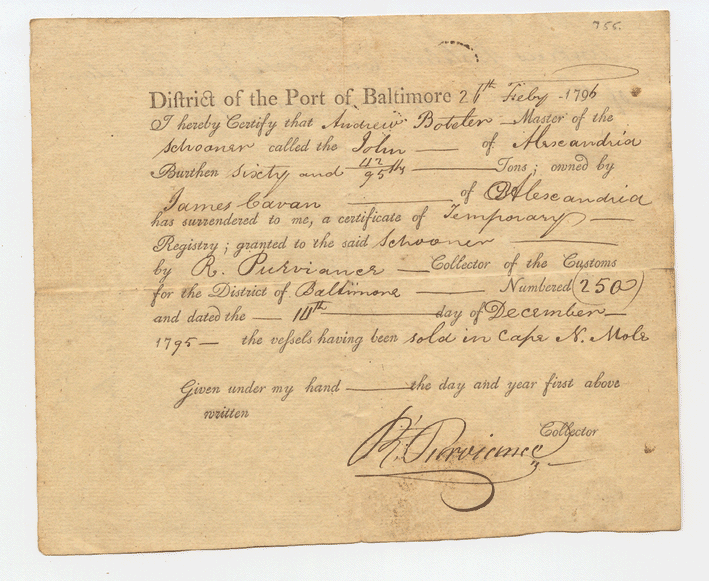
This certificate, signed by the collector at the Port of Baltimore on 26 February 1796, is a receipt indicating that the master of the schooner John had properly given up the Temporary Registry Certificate issued to the vessel at Baltimore 10 weeks earlier. Since the John had been sold, a new permanent registry was required. Certificates similar in size and style were also issued for receipt of vessel Enrollments.
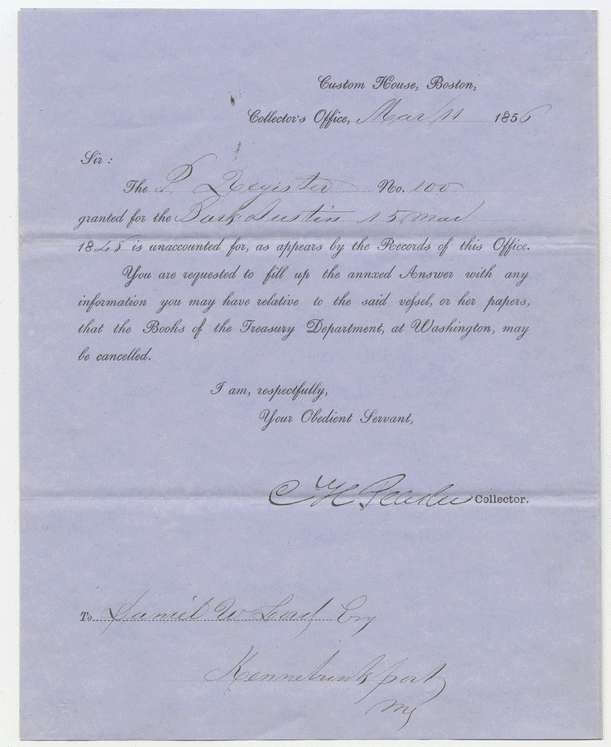
This form letter from the collector at Boston indicated the extent to which the customs districts sought to control the circulation of Ship’s Registers and Enrollments.
